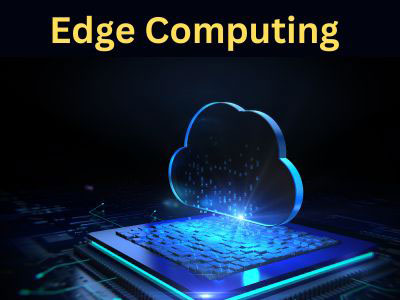What Is A Recent Innovation In Edge Computing?
Key Takeaway
One recent innovation in edge computing is AI-driven insights. By embedding AI models into edge devices, real-time data processing becomes possible without relying on the cloud. This is critical for industries like healthcare, where wearable devices analyze patient vitals and provide immediate feedback, or in manufacturing, where equipment uses AI to predict maintenance needs and prevent downtime.
Another major development is 5G integration with edge computing. 5G’s high-speed, low-latency connectivity complements edge systems by enabling seamless communication and rapid data transfer. This combination powers applications like autonomous vehicles and smart city systems, ensuring real-time responses. These advancements demonstrate how edge computing is evolving to address the growing demands of modern, connected environments.
AI-Driven Insights at the Edge
Artificial intelligence (AI) at the edge is revolutionizing data processing and decision-making. Instead of relying solely on cloud-based solutions, edge devices are now equipped to run AI models locally. This shift reduces latency and enhances real-time responses, making it invaluable for industries like healthcare, manufacturing, and transportation.
Imagine a smart factory where edge devices equipped with AI can instantly identify defects in production. By processing data locally, these systems can flag and resolve issues without waiting for cloud-based analysis. Similarly, AI-driven insights at the edge are critical in healthcare, where wearables analyze patient data in real time to detect irregularities and alert medical professionals immediately.
This innovation also reduces bandwidth usage, as only essential data is transmitted to the cloud. By embedding AI capabilities directly into edge devices, organizations can create faster, more efficient, and scalable systems that cater to the growing demands of IoT applications.

5G Integration with Edge Computing
The combination of 5G and edge computing is a game-changer. 5G networks offer unprecedented speed, low latency, and massive device connectivity, making them a perfect match for edge computing. Together, they create a seamless ecosystem where data is processed at lightning speed and decisions are made almost instantly.
Consider autonomous vehicles. These rely on real-time data to navigate safely. With 5G-enabled edge computing, vehicles can process sensor data locally while staying connected to broader traffic networks for live updates. This ensures safety and efficiency on the road.
Additionally, 5G integration enhances edge capabilities in industries like smart cities, where sensors monitor traffic, weather, and utilities. By leveraging 5G, edge devices can communicate with central systems faster and more reliably. This powerful combination is transforming edge computing into a robust and scalable solution for modern challenges.
Advancements in Edge Hardware for IoT Devices
Edge hardware has seen significant innovation, tailored to meet the growing demands of IoT applications. These devices now boast improved processing power, energy efficiency, and compact designs, enabling them to handle complex tasks locally.
Take edge gateways, for example. Modern gateways are equipped with advanced processors and AI chips, allowing them to process data from multiple IoT sensors simultaneously. This capability is essential in industries like agriculture, where smart devices monitor soil, weather, and crop health in real time.
Moreover, advancements in edge hardware include enhanced GPUs (graphics processing units) that support AI workloads. These are crucial for applications like augmented reality (AR) and virtual reality (VR), where real-time rendering is key. The rise of energy-efficient hardware also ensures that IoT devices can operate for extended periods, even in remote locations, without frequent battery replacements.
Edge Computing for Real-Time Video Analytics
Video analytics at the edge is transforming how we extract insights from video streams. Whether it’s for surveillance, traffic management, or retail, edge computing enables real-time processing of video data without relying on cloud infrastructure.
Consider smart surveillance systems. Cameras equipped with edge computing capabilities can identify potential threats, such as unauthorized access or suspicious behavior, and alert authorities instantly. This reduces response time and enhances security.
Retail is another sector benefiting from this innovation. Edge-enabled cameras analyze customer behavior in real time, providing insights into shopping patterns and preferences. This data helps retailers optimize layouts, improve customer experiences, and increase sales.
By processing video data locally, edge computing eliminates latency, reduces bandwidth usage, and ensures privacy, as sensitive footage doesn’t need to be transmitted to the cloud. It’s a practical and efficient solution for real-time applications.
Blockchain for Enhanced Security in Edge Applications
Security is a top concern in edge computing, and blockchain is emerging as a powerful solution. By decentralizing data storage and creating immutable records, blockchain ensures that edge applications remain secure from tampering and unauthorized access.
In supply chain management, for instance, blockchain can track goods in real time at the edge. Each transaction is recorded on a secure ledger, making it easy to verify authenticity and prevent fraud. Similarly, in healthcare, blockchain secures patient data by ensuring only authorized parties can access or modify records.
Blockchain also enhances IoT device security. By using smart contracts, devices at the edge can authenticate themselves and communicate securely with other devices. This prevents cyberattacks like spoofing or data breaches. Combining blockchain with edge computing creates a robust and trustworthy ecosystem for critical applications.
Conclusion
Recent innovations in edge computing, from AI-driven insights to 5G integration and blockchain security, are reshaping industries. Advancements in edge hardware and real-time video analytics further highlight the potential of edge computing to transform how data is processed and decisions are made.
These breakthroughs don’t just improve performance—they unlock entirely new possibilities. As industries embrace these innovations, edge computing will continue to drive efficiency, enhance security, and revolutionize how we interact with technology. The edge revolution is here, and it’s only getting started.

